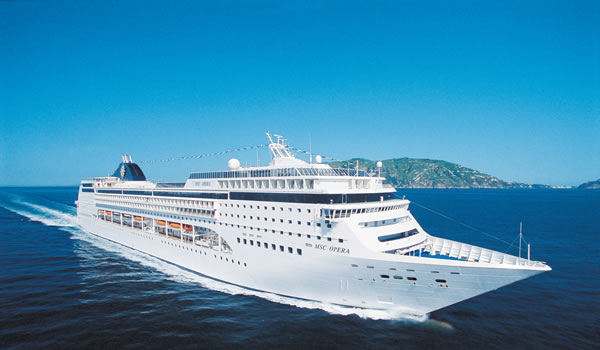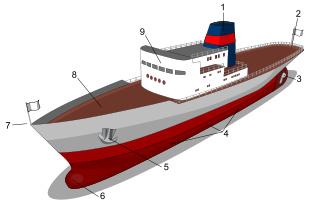ships
A ship is a large watercraft that travels the world's oceans and other sufficiently deep waterways , carrying passengers or goods, or in support of specialized missions, such as defense, research and fishing. Historically, a "ship" was a sailing vessel with at least three square-rigged masts and a full bowsprit. Ships are generally distinguished from
boats , based on size, shape, load capacity, and tradition.
Ships have been important contributors to human migration and commerce. They have supported the spread of colonization and the slave trade, but have also served scientific, cultural, and humanitarian needs. After the 15th century, new crops that had come from and to the Americas via the European seafarers significantly contributed to the world population growth. [1] Ship transport is responsible for the largest portion of world commerce.
As of 2016, there were more than 49,000 merchant ships , totaling almost 1.8 billion dead weight tons. Of these 28% were oil tankers , 43% were
bulk carriers , and 13% were container ships . [2] Military forces operate vessels for naval warfare and to transport and support forces ashore . As of 2016, among the world's 104 navies, Korean People's Navy of North Korea had the most surface vessels (967), followed by People's Liberation Army Navy of China (714), the United States Navy (415), Islamic Republic of Iran Navy (398), and Russian Navy (352). The top 50 navies had a median fleet of 88 surface vessels each, according to various sources. [3]
Nomenclature
Main parts of ship. 1 : Funnel ;
2 : Stern ; 3 : Propeller and Rudder ;
4 : Portside (the right side is known as
starboard); 5 : Anchor ; 6 : Bulbous bow ; 7 : Bow; 8 : Deck;
9 : Superstructure
For more details on this topic, see
Glossary of nautical terms .
Ships are generally larger than boats, but there is no universally accepted distinction between the two. Ships generally can remain at sea for longer periods of time than boats. [4] A legal definition of ship from Indian case law is a vessel that carries goods by sea. [5] A common notion is that a ship can carry a boat, but not vice versa . [6] A US Navy rule of thumb is that ships heel towards the outside of a sharp turn, whereas boats heel towards the inside [7] because of the relative location of the center of mass versus the center of buoyancy .[8][9] American and British 19th Century maritime law distinguished "vessels" from other craft; ships and boats fall in one legal category, whereas open boats and rafts are not considered vessels. [10]
In the Age of Sail , a full-rigged ship was a sailing vessel with at least three square-rigged masts and a full
bowsprit; other types of vessel were also defined by their sailplan, e.g.
barque, brigantine , etc.[11]
A number of large vessels are usually referred to as boats. Submarines are a prime example. [12] Other types of large vessel which are traditionally called boats are Great Lakes freighters, riverboats , and
ferryboats . [10] Though large enough to carry their own boats and heavy cargoes, these vessels are designed for operation on inland or protected coastal waters.
In most maritime traditions ships have individual names , and modern ships may belong to a ship class often named after its first ship. In the northern parts of Europe and America a ship is traditionally referred to with a female grammatical gender , represented in English with the
pronoun "she", even if named after a man. This is not universal usage and some journalistic style guides advise using "it" as referring to ships with female pronouns can be seen as offensive and outdated. [13][14] In many documents the ship name is introduced with a ship prefix being an abbreviation of the ship class, for example "MS" (motor ship) or "SV" (sailing vessel), making it easier to distinguish a ship name from other individual names in a text.
